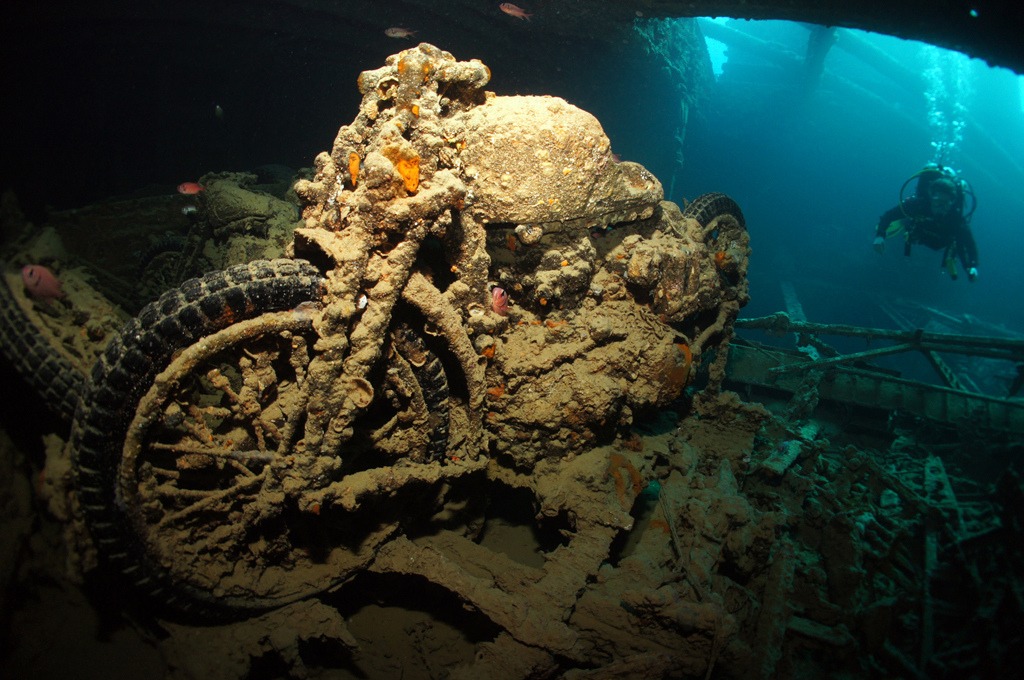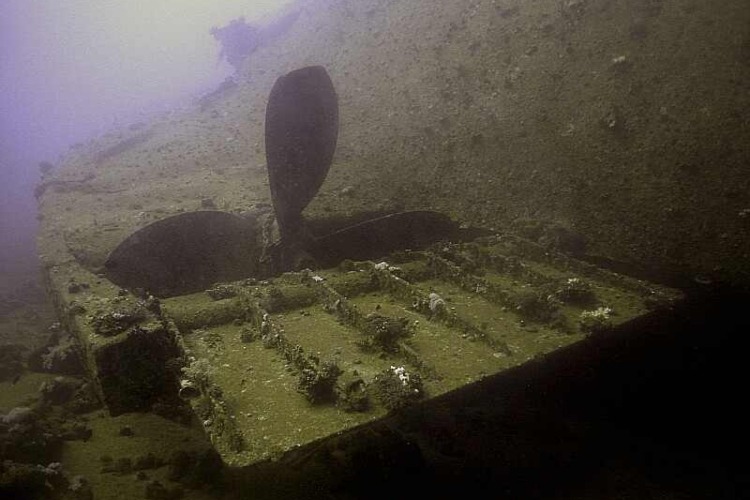Delineating the borders between three of the world’s most pivotal continents—Asia, Africa, and Europe—in what is collectively known as the Old World, the Red Sea is, and has been for millennia, one of the most navigated bodies of water on earth. However, owing to its storms, strong winds, numerous reefs, and dangerous currents, Egypt’s sea to the east has been a historic graveyard of ships.
Though considered tragic events in their respective times, these shipwrecks of the depth are now well-known diving sites, with a myriad of tourists and diving enthusiasts coming from all over the globe to witness not only the majesty of the Red Sea corals and marine wildlife but also these lost ships with their cargo still intact.
SS Thistlegorm
Perhaps the most well-known of the Red Sea’s many shipwrecks, and possibly among the very best wreck dives in the world is the SS Thistlegorm. Back during WWII, this British warship’s time was cut short when an unsuspecting German aircraft dropped two bombs onto the ship as it was crossing the Red Sea. Shortly afterwards, the boat ripped open and immediately sunk down 30 meters to the bottom of the sea.
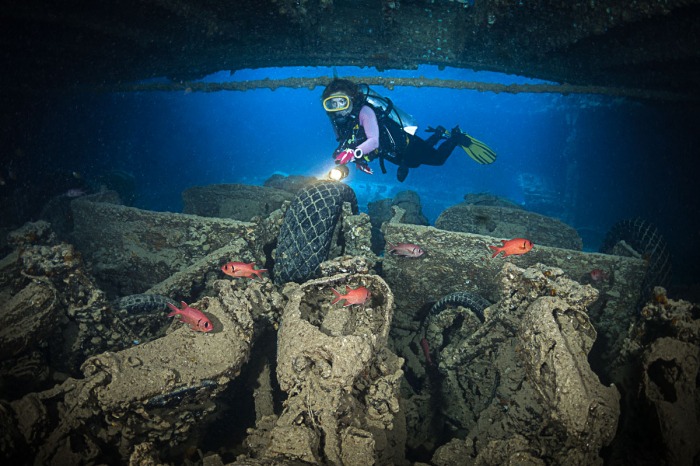
The boat’s popularity as a diving spot all stems from the fact that it is home to a treasure trove of cargo. Diving down, you’ll get to witness everything from tanks, giant shells, land mines and rifles to motorbikes and trucks. There is even a multi-ton train that blew off the ship and is currently standing on the sand by the port side. To visit the ship, you’ll need to head to the spot near Sha’ab Ali, in the Straits of Gubal to the west of the Sinai Peninsula’s southern tip.
SS Carnatic
Back in September 1869, a classic steamship by the name of Carnatic sunk into the depths of the Red sea after striking the Abu Nuhas Reef. That particular reef became responsible for the sunken fate of many other ships including the Kimon M and Giannis D. It is considered one of the oldest shipwrecks, one that has been underwater for more than 150 years. Beyond its old age, the Carnatic is also a popular diving spot because of how it transformed into a thriving reef, covered almost entirely in soft and hard corals. It almost became an extension of the Abu Nuhas Reef that was responsible for its fate.
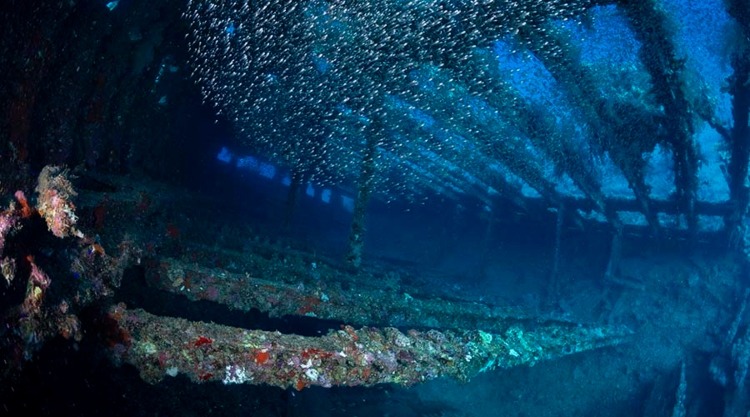
Diving down to visit this wreck, there are many cool spots to explore including passing through the space between the decks towards the stern, an experience akin to swimming inside the rib cage of a giant animal. Today, the infamous ship is located on the northern side of Sha’ab Abu Nuhas Reef in the Straits of Gobal.
Chrisoula K
Another victim of the Abu Nahas reef is the Chrisoula K, a German built cargo vessel that sunk during its journey from the Mediterranean to Jeddah. At that time, back in 1981, the ship was filled with tons of fine Italian floor tiles, many of which can still be found today. To see them for yourselves, you’ll have to head to the ship’s holds where you’ll find stacks of the square bundled tiles illuminated by the light pouring through the holes in the hull.
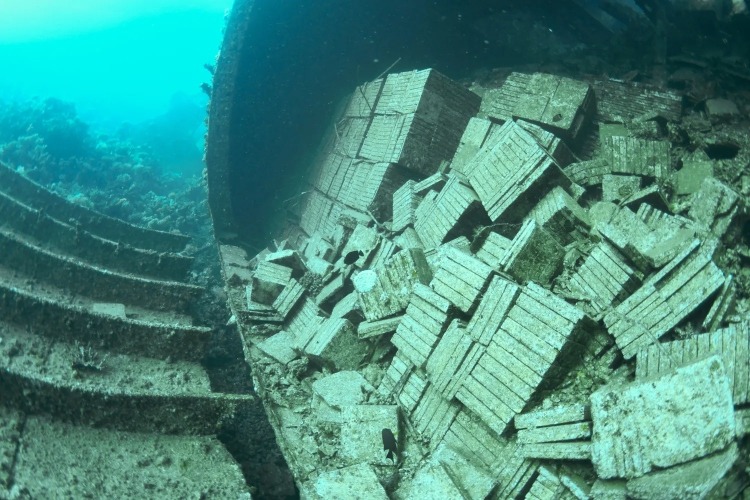
During your dive, you should also check out the engine room but make sure that you have the required training and experience to safely penetrate it. You can also ask your guide to show you the drill press as well as the oven in the kitchen. At this diving site, located on the Eastern side of Sha’ab Abu Nuhas reef, in the busy Strait of Gobal, a spot that can easily be reached by boat from Hurghada, you’ll also get to witness schools of different types of sea life from Spanish dancers to the masked butterflyfish.
Giannis D
Located around the same area as the Carnatic, the Giannis D was a cargo ship built in Japan that was sunk en route from Croatia to Saudi Arabia in 1983. At that time, the ship ended up drifting away from its set course and was moving at full speed around the Sha’ab Abu Nuhas Reef. It then struck the reef and ended up stranded in the sea for several weeks. Later a storm arrived and it is said that lightening split the boat in half and because of that the ship sank to the base of the reef.
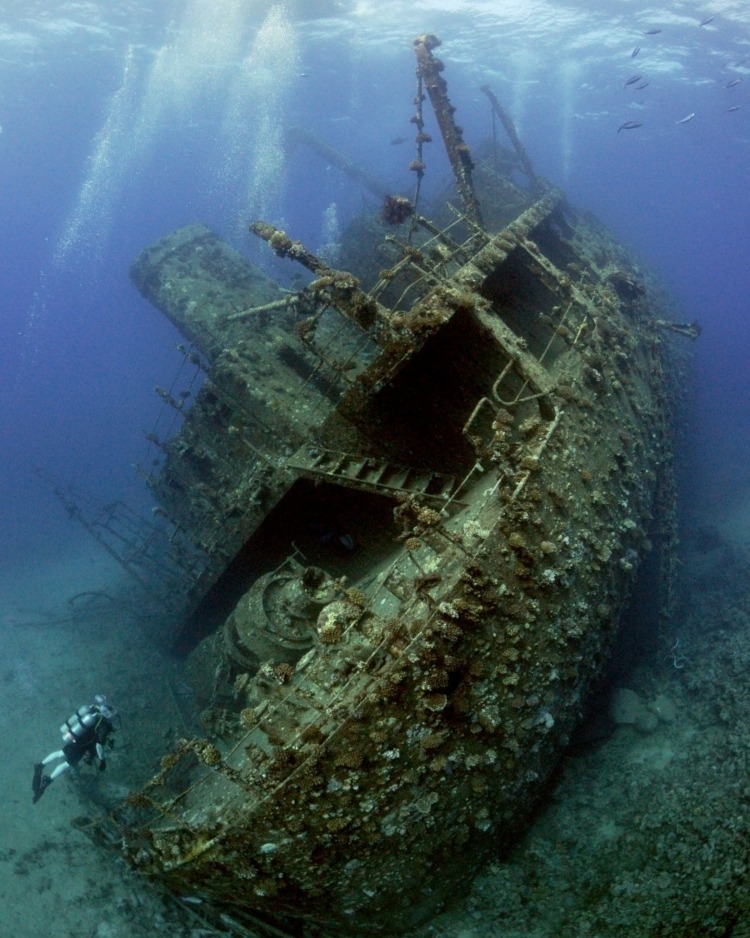
Exploring this sunken ship is a great experience for divers as they can swim inside its engine room as well as other rooms connected to it. They can also enjoy the surrounding marine life as this site is known to be teeming with life. Divers are always advised to keep an eye out for enormous grey mottled moray eels, coral, prawns, mullet, butterflyfish and pretty pipefish.
The Ulysses
Back in 1887, as the Ulysses entered the Red Sea through Suez, it collided with the Island of Gobal Seghir in the Straits of Gobal. The damage was at first considered minimal, but as the ship sailed on, the situation was exacerbated and the crew had to abandon ship. Eventually, the ship sank and settled in the reef below and today, it sits on the port side with its bow lying in 4-5 meters of water.
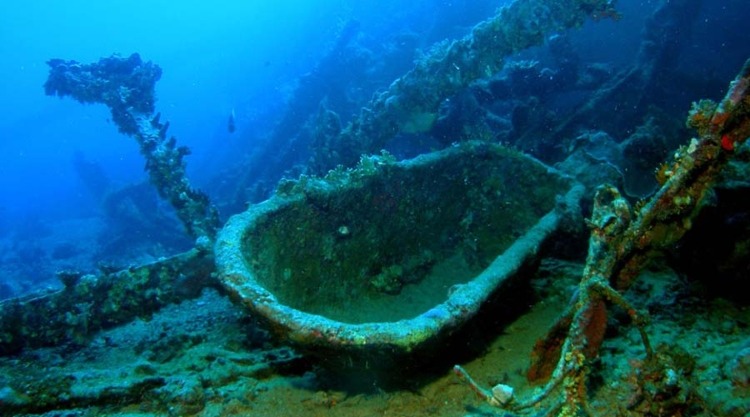
Just like that of the Giannis D, this wreck is covered in soft corals and is rich with marine life so its a great diving spot for all types of divers. Beyond that, the ship itself is a great spot to explore with many of its elements intact including stern, rudder and propeller. Most of its wooden decking rotted away, revealing a framework of iron supports similar to those on the Carnatic.
Kimon M
Back in 1978, the Kimon M set sail from the Turkish port of Iskenderun, destined to arrive at Bombay. Loaded with 4,500 tons of bagged lentils, the ship sailed for Port Said, through the Suez canal until it arrived open waters of the Red Sea. That it was when it struck Sha’ab Abu Nuhas reef which has claimed most of the ships on this list so far.
Like the other shipwrecks of the area, it is home to many soft corals and diverse marine life. Divers who decide to visit the sunken Kimon M usually tend to swim along the port side all the way to the stern where they can find its propeller and rudder.
Dunraven
One of the oldest wrecks on this list, the Dunraven was sunk in 1870 at the Strait of Gobal, north of Beacon Rock and 12 kilometers west of Ras Mohammed. The British ship was returning from Bombay en route to Newcastle carrying a shipment of wool and cotton.
Any diver visiting this sunken boat need to be ready to dive 30 m underwater to witness the wreck and they also need to be cautious as there is usually a very strong current near the ship. It makes for a fun dive as the upside-down wreck has an opening that divers can use to swim across the entire length into the bow.
Kingston
The Kingston met its fate when it ran into the reef at Shag Rock in 1881. It was because of how the ship had run off its course travelling much further east than realized. At that time, there was a point when the captain felt that he had cleared the Gulf of Suez, the captain ended up leaving the bridge and retiring. A short time later, the ship ended up running around on Shag Rock. Today, the ship lays at a depth of 10 to 20 meters making her a great second stop after you’ve explored the legendary Shag Rock.
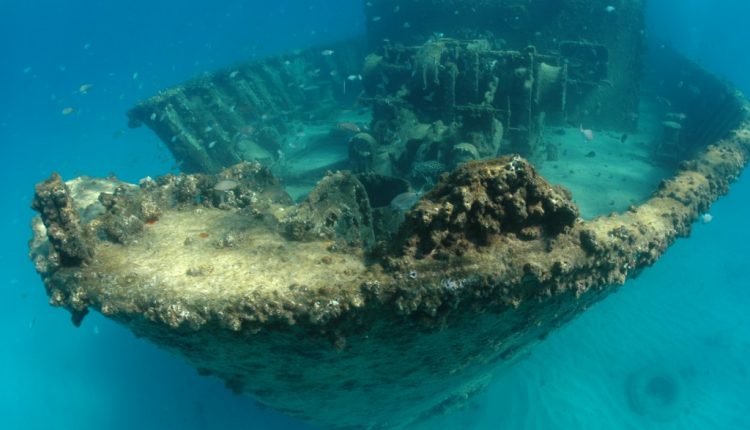
Today, beautiful corals adorn the insides of the lost ship, which happens to also be home to sea turtles, large shoals of goatfish, and giant morays. Beyond that, even though this wreck has been underwater for more than 125 years, it is still in remarkable condition. Most of the hull is intact and there is even remnants of coal in the ship.
Rosalie Moeller
In WWII, two days after the Thistlegorm was air-raided in the straits of Gobal, the Rosalie Moeller was attacked by the German Luftwaffe as it was anchoring in the Straits of Gobal. Both these ships suffered a similar fate during a time that was ravaged by a long lasting war.
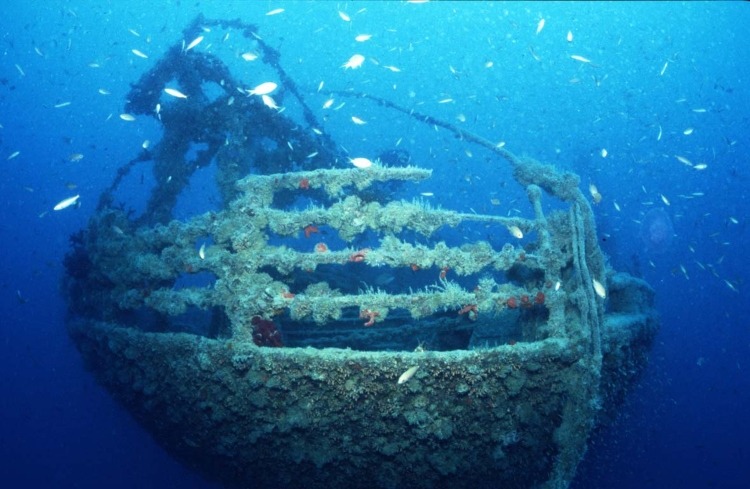
The wreck is still intact and holds numerous types of corals and fish. The hard and soft corals surrounding the ship make for great underwater photo opportunities. The ship is also great because of how it attracts a diverse variety of marine life including barracudas, Tunas, Jacks and Trevallies. Near the ship, you can also sometimes spot a reef shark.
Yolanda
Built in 1964, the Cypriot cargo ship hit the reef at Ras Mohammed in 1980 carrying a cargo of British toilets, bathtubs and pipes. The wreck was only discovered again 20 years later when it became a popular site for recreational diving.
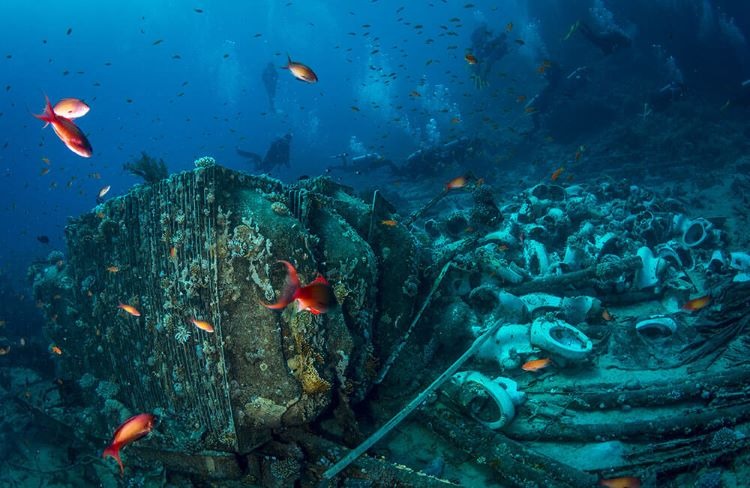
To this day, there’s no shortage of pictures showing laughing divers sitting on the sunken toilets and posing in bathtubs. This makes it one of the most unique and fun sunken ships to visit in the Red Sea.
Now with your next upcoming dive, you have 10 sunken ships to pick from, each one offering a completely unique experience because of how each ship is different in terms of structure, cargo as well as how it drowned. Let us know in the comments if you have visited any of these sunken ships and if so, which one was your favorite?


